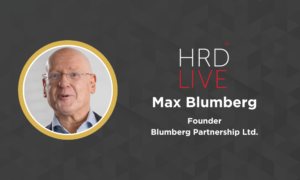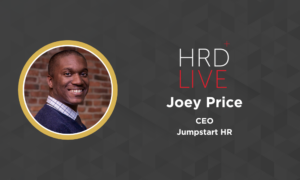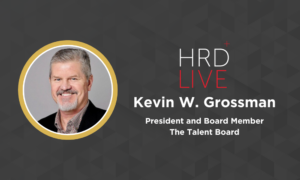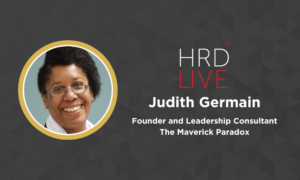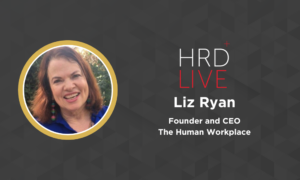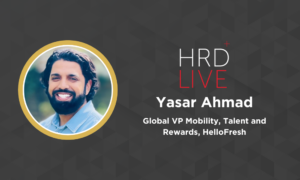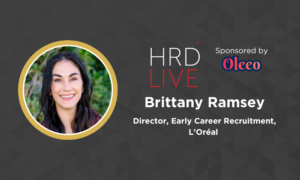Perfecting hybrid productivity with people analytics
- 4 Min Read
In the latest HRD Live Podcast episode, Bradford Williams, Head of HR Technology & People Analytics at Northwestern Mutual, shares the as-yet unsolved issues with hybrid working, and what metrics matter when creating hybrid organization networks that produce successful business outcomes.
- Author: Benjamin Broomfield
- Date published: Apr 12, 2023
- Categories
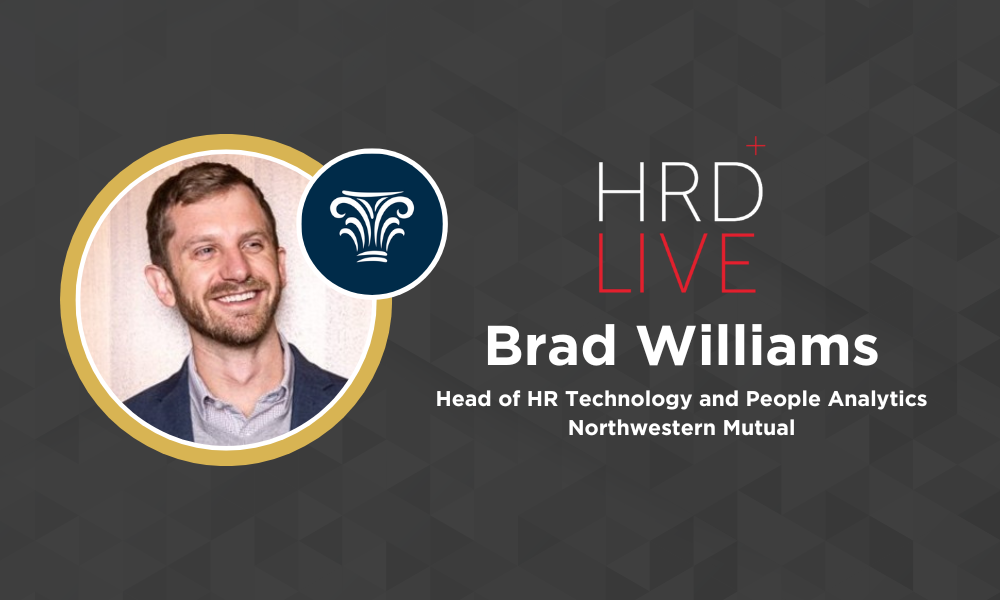
Podcast: Play in new window | Download
Subscribe: RSS
72% of workers would prefer long-term flexibility over extra money. And yet, with organizations including Amazon and Disney implementing some type of return-to-office mandate, the hybrid working conversation continues to frustrate employees and employers alike. But as we seek a future that draws on the respective advantages of in-office and remote working, are organizations taking a data-informed approach to hybrid workforce collaboration?
Bradford Williams, Head of HR Technology & People Analytics at Northwestern Mutual, advocates for the use of people analytics and data insights when developing hybrid strategy at an organizational level, as well as supporting employees at the individual level to feel productive and engaged. In the latest HRD Live Podcast episode, he shares the as-yet unsolved issues with hybrid working, and what metrics matter when creating hybrid organization networks that produce successful business outcomes.
Unsolved hybrid challenges
Although the conversation around hybrid working feels well-worn, much remains unsolved. Williams argues we are still learning how to practically implement the idea that different types of work are suited to in-office or remote working. Within a single day of work, activity varies between focus time and collaboration time. Finding a productive balance between the two is a work in progress for many organizations.
So, where do people analytics fit into the picture? According to Williams, the best place to start is to measure who is coming on-site, and who isn’t. Although obvious and basic, it begins to create a picture of which individuals elect to come into the office. “Understand who’s coming into the office looking at badging data,” Williams explains. Augment this view with data from collaboration tools such as Slack, Zoom, or Teams. These basic metrics begin to create a spider web of the different individual preferences and organization networks that will help to define and govern your hybrid working policy.
Individual working preferences
Having modeled where each individual sits on the scale from in-office to fully remote, further employee listening can help turn individual preferences into healthy hybrid working practices. “Tap into their sentiment through employee listening to learn why or why not certain individuals are coming in. Develop strategies around those to bring more people on campus,” explains Williams.
He also emphasizes the need for caution around encouraging people back into the office. “You can’t incentivize people back into the office by throwing free lunches, raffles, concerts, or happy hours. To incentivize bringing people back into the office, you need to understand what’s meaningful to those individuals and why certain individuals come in.”
Through initial badging data, and subsequent employee listening and survey data, people analytics can co-create strategies to encourage individuals back into the office if this is the company’s strategic direction. But this data may also indicate another course of action will better meet the needs of an organization’s workforce.
Collective organization networks
Beyond basic requirements for in-office or remote working, people analytics and people data can help HR to equip leaders to manage their teams successfully. This includes collaboration between organizational networks. “We’re looking at how networks are distributed within our organization and understand how collaboration works. Both within teams or departments and outside of those teams and departments,” Williams explains.
Teams should prioritize understanding the moments that matter to employees during collaboration, both on-site and remotely. Sharing these insights with people leaders and managers equips them to make the best decisions for their teams. It empowers them to structure day-to-day work to be more productive, efficient, and effective.
Future of (hybrid) work
We know the future of work is uncertain and will continually evolve. Whilst there can be an element of prediction, Williams argues that there will inherently be new and unexpected challenges that disrupt the workforce. “Embed yourself with your HR business partner, or whomever your deliver arm of HR is, and your people leaders. Co-create and co-solution those challenges together,” he emphasizes.
Preparing for the future of this work requires people analytics teams to equip decision-makers with the data and insights they need to make decisions that benefit their people. But this alone is not enough. “Teach, coach, and upskill individuals on how to interpret the data,” Williams adds. “How do you use it? What decisions can you make?”
Timestamps
00:11 – Introduction
00:59 – What are the core challenges with hybrid working that remain unsolved in many organizations?
02:23 – What are some of the most important metrics you feel people analytics can help with?
04:35 – How can people analytics be used to develop optimized hybrid working models?
06:23 – What data is important when analyzing organization networks and understanding how teams collaborate?
08:50 – How can people analytics help align your work with business challenges to demonstrate value and impact?
11:25 – How will people analytics equip leaders with the tools to navigate a volatile future landscape?


